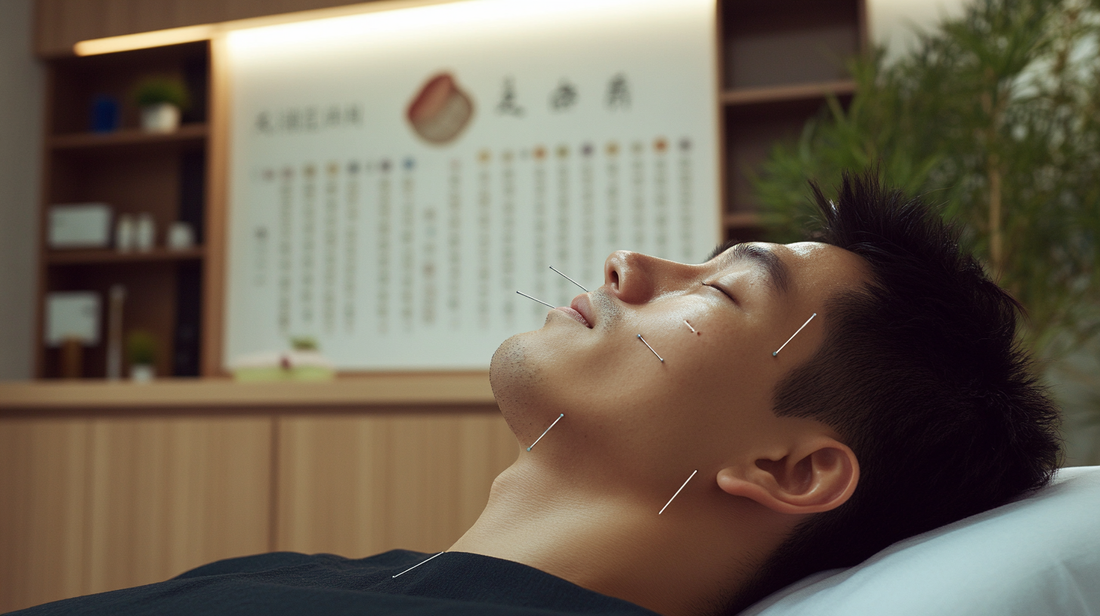
What is Fascial Acupuncture and How Does it Work?
Share
Introduction
Fascial acupuncture is emerging as a powerful therapy in both integrative health and natural beauty care. While it’s known for pain relief and posture alignment, one of its most exciting uses is in improving cosmetic health and facial complexion. By targeting the body’s fascial network—a web of connective tissue surrounding muscles and organs—this method supports circulation, detoxification, and skin vitality from the inside out.
This blog explores how fascial acupuncture enhances skin tone, elasticity, and glow. You’ll learn how it works, how it differs from traditional acupuncture, what facial areas it targets, and what kind of results to expect. We’ll also review clinical insights and real-world results from clients at Vital Duo.
What Is Fascia?
The Fascial System and Its Role in Beauty
Fascia is a connective tissue network that surrounds and interconnects everything in the body—muscles, blood vessels, nerves, and organs. It:
- Maintains facial structure and skin support
- Holds tension from stress, posture, and emotion
- Influences lymphatic drainage and microcirculation
When fascia becomes stiff or dehydrated, it can cause:
- Puffiness
- Dull complexion
- Skin sagging or asymmetry
- Restricted facial movement
“The fascial system is the hidden foundation of skin health, facial tone, and youthful contour.” — Journal of Cosmetic Dermatology, 2021
What Is Fascial Acupuncture?
Fascial acupuncture is a specialised technique that uses fine needles to release restrictions in the fascia, particularly in the face, neck, and scalp. It combines:
- TCM meridian theory
- Myofascial anatomy
- Neurological and circulatory activation
This technique accesses deeper tissue layers than standard cosmetic acupuncture and works holistically to restore tone and brightness.
“Facial needling within fascial planes improves local elasticity, lymph flow, and muscle tone.” — Harvard Osher Center, 2022
How Fascial Acupuncture Enhances Complexion
1. Increases Microcirculation
- Improves nutrient delivery and oxygenation
- Reduces dullness and boosts natural radiance
2. Releases Tension from Expression Muscles
- Softens frown lines, jaw tightness, and forehead creases
- Restores symmetry by relaxing hypertonic areas
3. Stimulates Collagen and Elastin
- Microtrauma from precise needling triggers skin repair
- Boosts elasticity, firmness, and skin thickness
4. Promotes Lymphatic Drainage
- Decreases puffiness and fluid retention
- Brightens under-eye areas and cheek definition
5. Regulates Nervous System and Hormones
- Balances cortisol and stress-induced aging
- Improves sleep, which enhances skin repair
“Skin blood flow increased significantly post-acupuncture, improving skin oxygenation and tone.” — Dermatologic Therapy, 2021
Facial Areas Commonly Treated
- Forehead and brow
- Cheeks and nasolabial folds
- Jawline and chin
- Neck and décolletage
- Periorbital area (under and around the eyes)
Each session is customised based on facial symmetry, tone, and underlying TCM diagnosis.
Fascial Lines & Facial Meridian Synergy
Fascial acupuncture aligns with facial meridians, enhancing both structural and energetic flow:
- Stomach and Large Intestine channels: front of face and jaw
- Bladder and Gallbladder channels: forehead, temples, scalp
- Triple Burner and Small Intestine: cheeks and ears
These lines correspond with modern fascial planes, supporting both collagen and Qi circulation.
“Facial acupuncture addresses skin tone at the connective and energetic levels—producing both external and internal beauty results.” — Journal of Chinese Medicine, 2022
What to Expect in a Session
- Assessment of skin tone, tension areas, and fascial asymmetry
- Gentle cleansing and preparation
- Precision needling in facial and scalp fascia
- Optional cupping, gua sha, or LED to enhance results
- Recommendations for diet, hydration, and rest
Sessions typically last 60 minutes and are painless with visible improvements over 3–6 sessions.
Clinical Benefits and Research
- Dermatologic Therapy (2021): Facial acupuncture improved skin elasticity by 12% and reduced periorbital puffiness by 30% in 6 weeks
- Harvard Osher Center (2022): Fascial acupuncture activated key facial nerve pathways, improving tone and mobility
- Journal of Cosmetic Dermatology (2021): Combined acupuncture and fascia work showed greater improvement in sagging than acupuncture alone
Client Success Story at Vital Duo
Patient: Female, 42, high-stress job Goals: Reduce jaw tension, lift cheeks, and brighten skin
Assessment:
- Tightness in jaw and temple fascia
- Reduced circulation in mid-face
- Sleep disturbance and hormonal skin flare-ups
Treatment Plan:
- Weekly fascial acupuncture targeting masseter, zygomatic, and scalp fascia
- Custom herbal blend for Liver Qi and hormonal balance
- Gua sha and facial cupping at home between sessions
Results after 5 sessions:
- Smoother jawline and lifted cheeks
- Even skin tone with less puffiness
- Better sleep, improved confidence
Is Fascial Acupuncture Right for You?
This method is ideal if you:
- Want a natural alternative to fillers or Botox
- Have facial tension, puffiness, or dullness
- Prefer holistic skincare that includes nervous system balance
- Are recovering from stress or emotional fatigue
Final Thoughts
Fascial acupuncture goes beyond surface-level skincare. It revitalises your complexion by treating the underlying patterns of tension, stagnation, and stress that show up in your face.
At Vital Duo, we specialise in combining Traditional Chinese Medicine, facial acupuncture, and modern fascia theory to help you look and feel radiant. Book your session and let your natural beauty flow from within.
Academic References
- Dermatologic Therapy. (2021). Facial Acupuncture and Skin Health
- Journal of Cosmetic Dermatology. (2021). Myofascial Needling for Anti-Aging
- Journal of Chinese Medicine. (2022). Meridians and Facial Tone
- Harvard Osher Center. (2022). Fascial Acupuncture and Nerve Regulation
